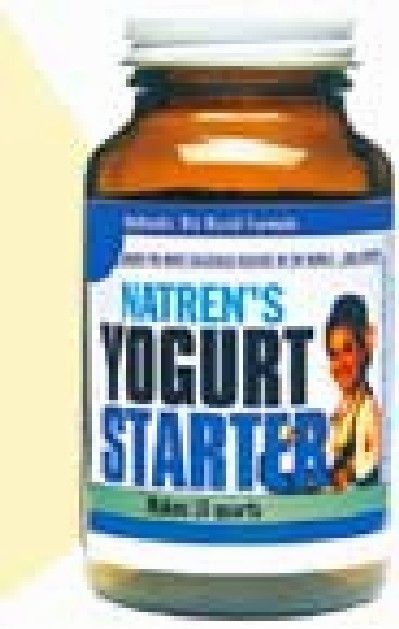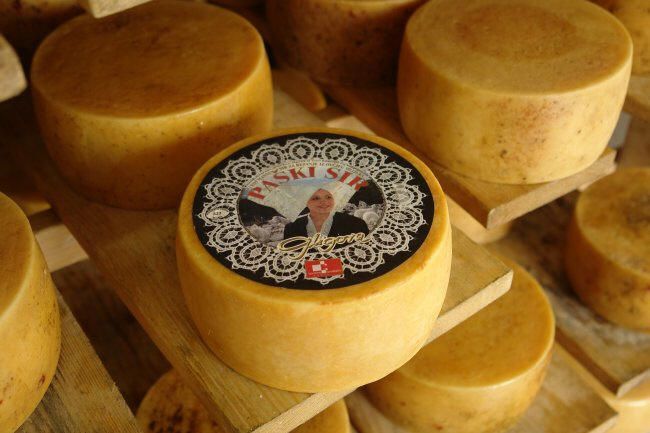Gift from Bulgaria

Yogurt is a creamy, tart treat best made from scratch at home with a good yogurt starter and fresh milk.
Scientists classify fermented milk products into four different groups. The first group is “acid/alcohol” milk products such as kefir and koumiss. Kefir is made with kefir grains, called “gift of the Gods” but of unknown origin, that initiate a dual lactic acid/alcohol fermentation process. Traditional koumiss is made with mare’s milk and named for the horse-herding Kumanes tribe that lived on the central Asian steppes until 1235. It is fermented by the acid producing L. bulgaricus and the alcohol-producing Torula yeast. (With mare’s milk in short supply most koumiss is made with cow’s milk, but since the two milks are not the same composition, it is a complicated endeavor.)
The next class of fermented milk is “high acid” Bulgarian sour milk cultured exclusively with Lactobacilllus bulgaricus. The third is “medium acid” acidolphilus milk and yogurt, which is what we have in the United States, primarily cultured with Lactobacillus acidophilus (a slow- and low-acid producer), and lastly, “low acid” cultured buttermilk and cultured cream.
Today, most yogurt starters, even the “Bulgarian” one from Natren I recommend, are a combination of at least two different bacteria. The presence of two bacterial strains, one high acid and one low, moderates the acidity of the finished product. For example, Strepococcus thermophilus ferments at 110°F to 112°F and produces .9-1.1 percent acid, Lactobacillus acidophilus ferments at 100° to 112°F and produces 1.2-2 percent acid, and Lactobacillus bulgaricus grows at 110° to 116°F and produces 2-4 percent acid. That’s why my favorite yogurt starter is 50:50 L. bulgaricus/S. thermophilus.
Most yogurt makers heat milk sufficiently to create a tabla rasa into which the new bacteria are dumped to do their handiwork, but this temperature far above 110°F. Whatever the highest temperature the milk will be heated to is, in my opinion raw milk is the best beginning product. It is not homogenized so you get a wonderful cream on top. It has not had milk solids added to it, so it won’t stick to the bottom of the pan. It is not previously been pasteurized, so you can decide yourself how high a temperature you want to take the milk to—a modest 110°F, that will preserve enzymes AND some of the competing naturally-occurring bacteria, or to the more traditional 180°F, which is hot enough to kill competing bacteria. The finished yogurt will be impacted by the choices you make at every stage.
I am less of a purest when it comes to yogurt, so I slowly and gently heat my raw milk to 180°F and then let it cool until I can stick in my finger for 10 seconds, which is around 110°F. (This is a technique I learned from a Bulgarian friend.) When it has cooled sufficiently, I add a rounded teaspoon of Bulgarian culture, which is really only 50 percent true Bulgarian, as explained previously. The finished yogurt comes out sharp, smooth and wonderful.
You can eat yogurt topped with fruit, as an ingredient to make a cool summer soup or a hot Indian dish. All the time, you are extending the life of milk.
Anna’s Bulgarian Yogurt
I have had the great fortune of living close enough to Anna Pavlova to get a container of yogurt every so often from her as a starter. If you don’t have a Bulgarian friend, a company in California sells a Bulgarian-style Yogurt Starter®. (See www.natren.com and look in their specialty items.) This wonderful product is a combination of Strepococcus thermophilus and Lactobacillus bulgaricus. Each bottle is decorated with the picture of Bulgarian woman.

- 8 cups milk (I prefer whole milk)
- ¼ cup yogurt from a previous batch
- or 4 tsp. of Natren yogurt starter as directed on the bottle
Bring the milk to at least 180°F, or until a ring of bubbles forms around the edge of the pan, but don’t allow to boil. Let cool until you can keep your finger in the milk while you count to 10. Divide yogurt starter or old yogurt between two wide-mouthed quart glass canning jars. Pour in about 1/4 cup milk and stir to incorporate the starter. Fill the jars with the the rest of the milk and screw on the lids.
Wrap the jars in a warm blanket and let sit overnight in a warm place or for at least eight hours. Unwrap and place in the refrigerator. I know you will enjoy this creamy, healthy yogurt.

